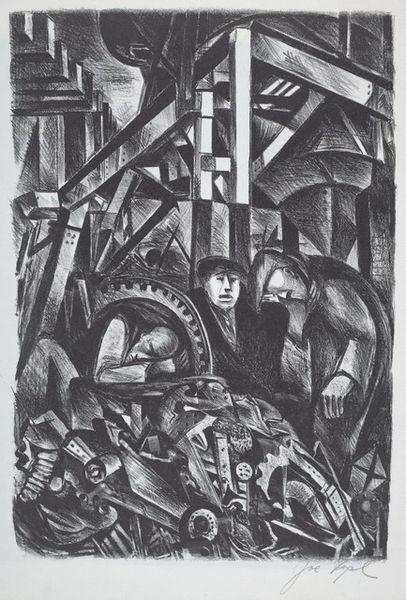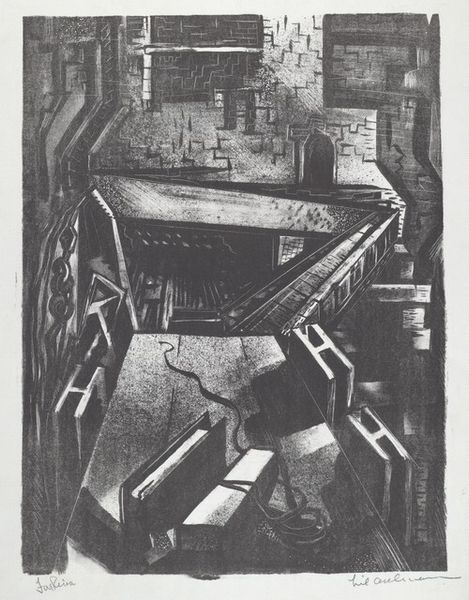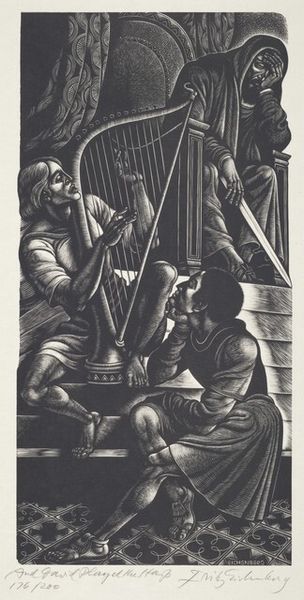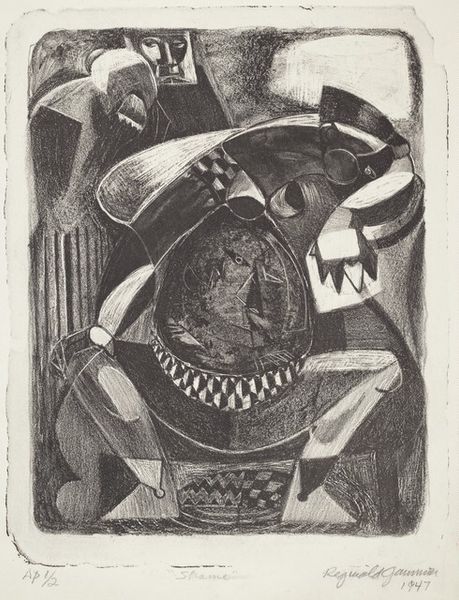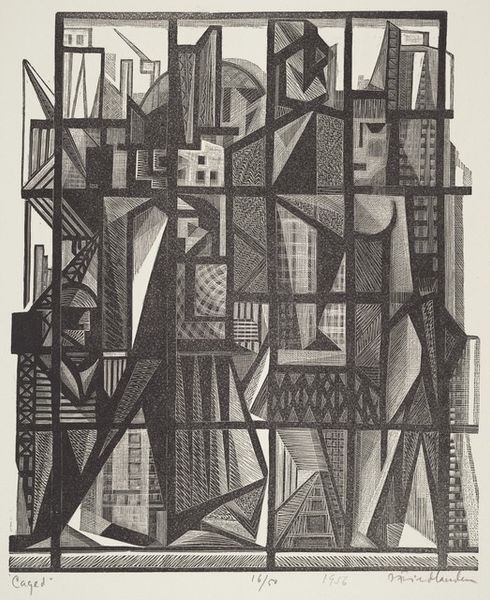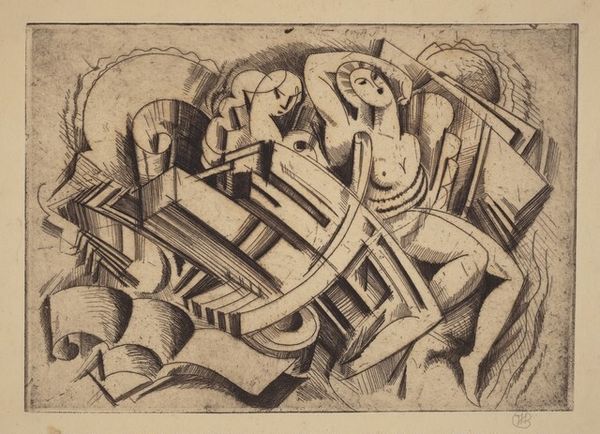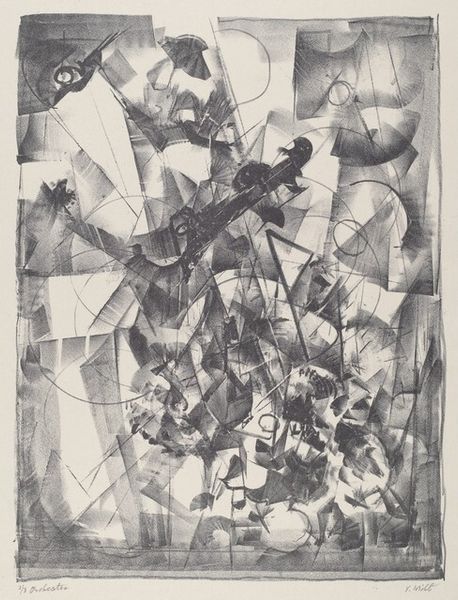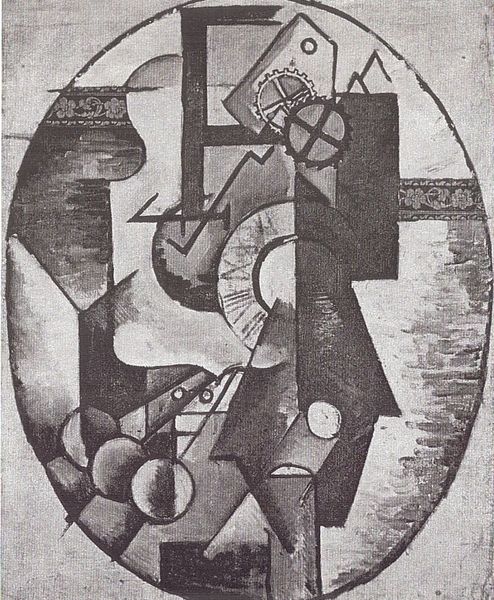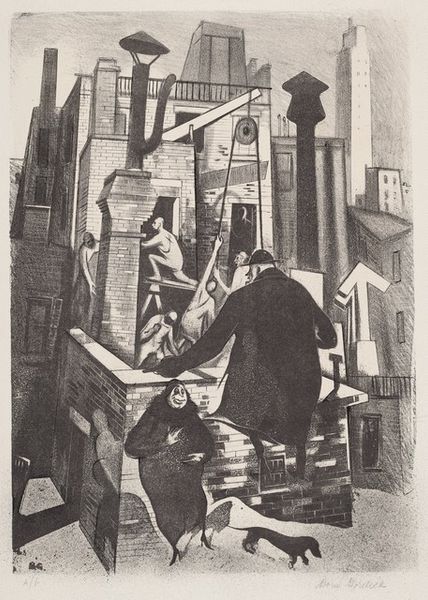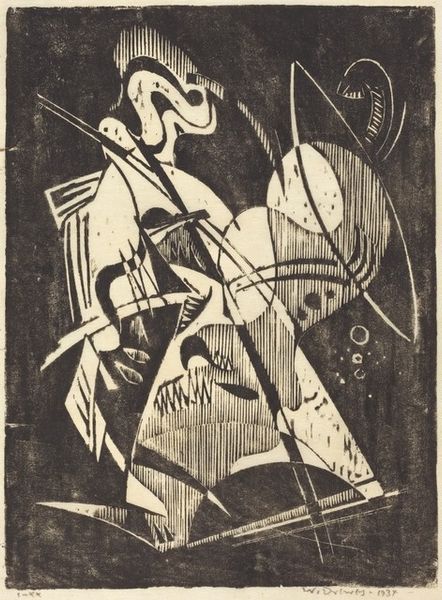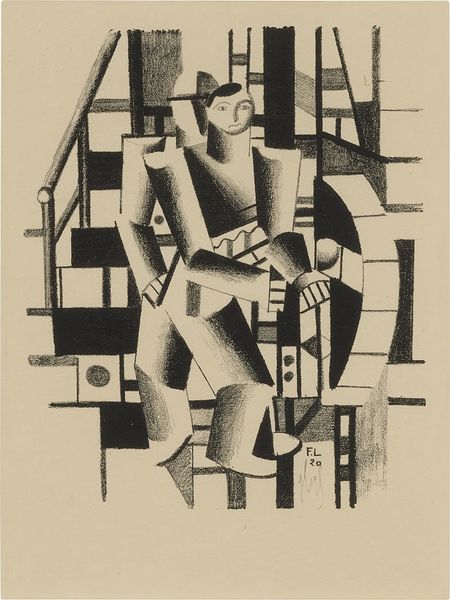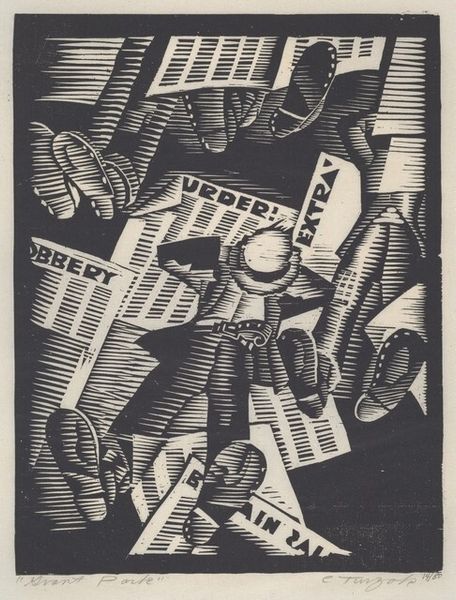
# print
#
caricature
#
caricature
#
figuration
#
history-painting
#
monochrome
Dimensions: Sheet: 405 x 360 Image:371 x 277
Copyright: National Gallery of Art: CC0 1.0
Editor: This is Joseph Vogel's "The Fiddler," created in 1932, a print depicting a somewhat surreal figure playing a violin. It has a somber tone to it, but also feels symbolic with all of the surrounding items. How do you interpret this work? Curator: Well, situated in 1932, the print’s symbolic weight bears directly on the rise of fascism. Look closely – the figure, more a caricature, is flanked by implements of authoritarian power: fasces, a tank, a skull. Note how the musician clutches the violin like a weapon, its bow mirroring a blade. What is the role of art and artists during times of conflict? Editor: It's unsettling to see these instruments of power and potential violence displayed right alongside the figure. You’re suggesting it critiques not just power but the way it co-opts culture, like music? Curator: Exactly. Vogel’s work highlights art’s potential complicity with oppressive regimes. Does the fiddler play for the people, or for power? The work's monochrome palette adds to its gravitas, referencing historical documentation and heightening the sense of urgency. Does the style remind you of other periods that might provide a social commentary? Editor: Now that you mention it, the hard lines of the figures give it some cubist tones, where the political environment became volatile, didn't it? It shows you need to look at art to see its social and historical impact, it becomes very clear the more we dig into the context surrounding its making. Curator: Precisely. Art often holds a mirror to society, reflecting its deepest anxieties and challenging us to confront uncomfortable truths. Editor: I'll definitely remember that looking at our upcoming pieces. It definitely highlights how even "beautiful" music can serve a dangerous purpose, if applied to nefarious regimes.
Comments
No comments
Be the first to comment and join the conversation on the ultimate creative platform.

